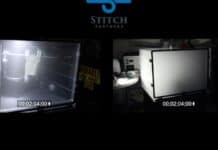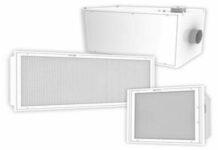By Phil Carrizales
Maintaining safe indoor environments is a greater priority than ever as people return to work and school during the pandemic. Equipped with the knowledge that the COVID-19 virus spreads primarily through droplets and aerosol particles, those in charge of maintaining a healthy building environment need to implement an effective strategy to optimize indoor air quality.
A plan that includes assessing indoor air quality, mitigation of airborne pathogens, improving ventilation, and knowing how to select the right air filtration system will successfully minimize viral spread, creating a safer environment for all occupants.

Assessing Your Indoor Air Quality
The air quality inside schools, offices, and other workplaces is important not only for occupants’ comfort but also for their health. One of the most significant factors that affect indoor air quality is ventilation – fresh air coming into the building.
Commercial and institutional settings should evaluate the performance of current building ventilation systems to determine if any supplemental interventions are necessary to reduce the risk of indoor COVID-19 transmission. The American Society of Heating, Refrigerating and Air-Conditioning Engineers (ASHRAE) convened an Epidemic Task Force, which has created a guide for building readiness that includes recommendations for evaluating adequate ventilation. This expert guidance can help building owners and facility managers identify indoor air quality risks specific to their facilities and create a targeted, cost-effective action plan for improvement.
Mitigating Infectious Airborne Particles
Since COVID-19 spreads more readily in an indoor environment vs. outdoors, the Centers for Disease Control and Prevention (CDC) includes building ventilation as a crucial component in its layered strategy to reducing virus exposure.
“As an extra precautionary step to providing the cleanest and safest air possible for our students and staff during the COVID-19 pandemic and beyond, we placed a HEPA air purification system in every classroom.”
Melissa Beaver, St. Vincent De Paul Vice President of Real Estate & Development
The CDC recommends the following protective ventilation practices and interventions to minimize airborne concentrations of COVID-19 and reduce viral risk to building occupants:
- Increase outdoor airflow, if feasible, and use fans to help exhaust room air to the outdoors.
- Take steps to maximize central air filtration and allow HVAC fans to run continuously rather than by the thermostat.
- Make sure restroom and kitchen exhaust ventilation systems are functional and operating at full capacity.
- Establish directional airflow where possible.
- Use ultraviolet germicidal irradiation (UVGI) when options for increasing room ventilation and filtration are limited.
- Adjust HVAC system to increase total airflow to occupied spaces and run it at maximum outside airflow for 2 hours before and after building occupation.
- Use portable high-efficiency particulate air (HEPA) filtration systems to enhance air cleaning, particularly in areas at higher risk for COVID-19 transmission.
Choosing The Right Portable Air Purifier
Most buildings may not require a brand-new ventilation system for safe occupation during the pandemic; however, an air quality assessment may uncover areas at risk. A portable air cleaner should also be considered in areas where adequate ventilation is difficult to achieve and in higher-risk areas, such as the school nurse’s office.
As recommended by the CDC, HEPA filtration systems offer a proven, cost-effective supplemental filtration option that will further decrease the risk of COVID-19 exposure in commercial and institutional building environments.
HEPA filters are at least 99.97% efficient at capturing human-generated COVID-19 viral particles, and with proper use, can help reduce indoor transmission of the virus. It’s important to choose an air filtration unit that fits the specific need of your space.
“Wicomico County Schools took the necessary steps to create the safest possible environment for in-person learning, which is why we installed air purification units in school buildings throughout the district as part of an overall program to improve student and teacher wellbeing.”
Wicomico County Schools
Here are seven specifications to look for:
- Designation as a HEPA unit, specifically indicating that it filters at least 99.97% of airborne virus particles
- The capacity to purify the air within the size room where it will be installed
- Quick removal of aerosols that contain harmful viruses, bacteria, mold, and smoke
- Easy to use and maintain
- Efficient and quiet operation
- 360-degree air circulation and purification
- Built-in sensors that provide real-time air quality data
Schools and workplaces can reduce health concerns related to COVID-19 by taking steps to improve indoor air quality. Through ventilation assessments and strategic implementation of interventions to mitigate airborne particles, facility managers actively protect employees, students, and visitors and provide a productive and healthy environment for all occupants.
Phil Carrizales is the Director of the Hygiene and Facilities Solutions Division at Acme Paper and Supply Company, one of the nation’s largest suppliers of sanitation solutions, disposable food service packaging, restaurant equipment and supply, retail and industrial packaging, and custom-designed packaging. Phil has over 20 years of experience in account management for major cleaning suppliers and is ISSA certified. Phil can be reached directly at pcarrizales@acmepaper.com.





















![[VIDEO] Collect Asset Data at the Speed of Walking a Building](https://facilityexecutive.com/wp-content/uploads/2024/02/maxresdefault-324x160.jpg)